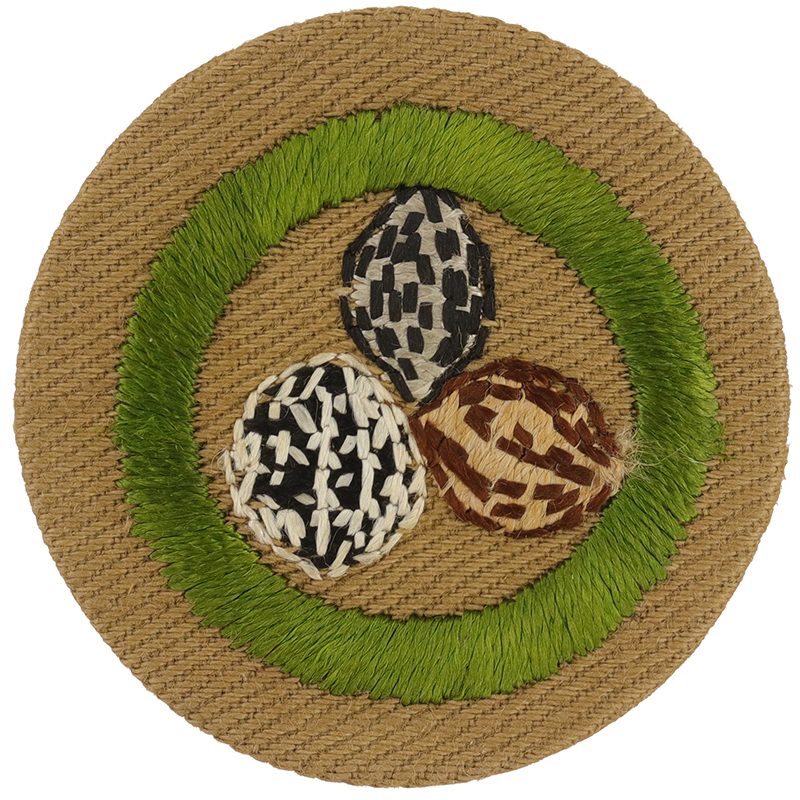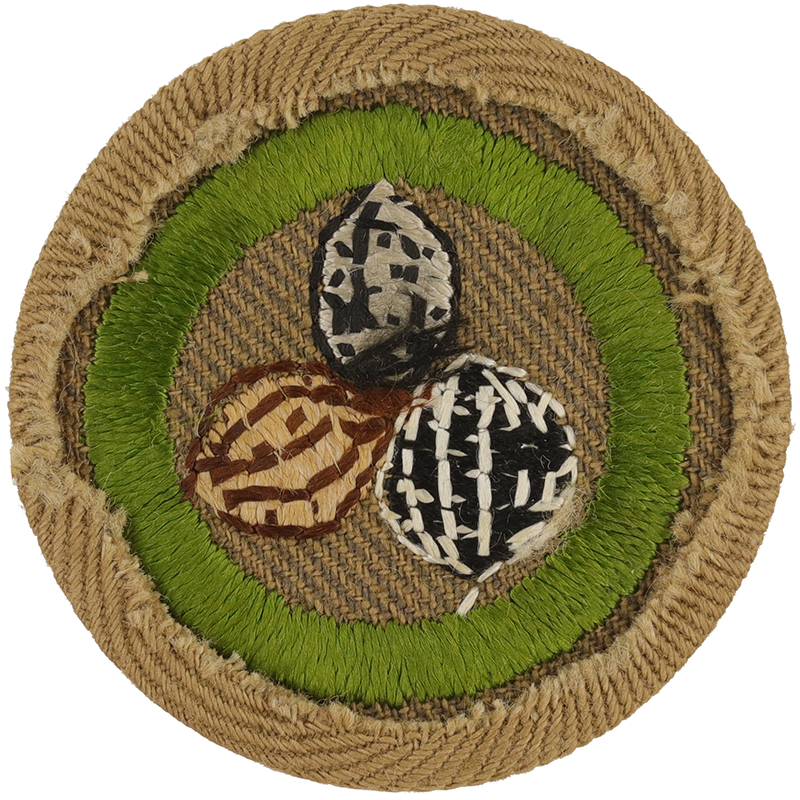
Fig. 1: NutCul-B2b-Front
- Cloth: Heavyweight tan right twill
- Design: Gray top nut
- Embroidery: Continuous loop silk

Fig. 2: NutCul-B2b-Reverse
- Back: Black imprint
Item Name: Nut Culture 1934 - 1935
Item ID: NutCul-B2b
Collector Rating: 1
Pamphlets Used to Earn this Badge
Requirements January 1928 until June 1953
1. Know the methods used in the propagation of at least four of the following nuts which involve the practices of budding, grafting, layering, and growth of seedlings: Pecan, Persian Walnut, Almond, Hazel, Black Walnut, Chestnut, Butternut, Hickory, Japanese Walnut.
2. Know the principles underlying the practice of grafting and the methods used in topworking nut trees.
3. Know the characteristics of the root systems of at least two kinds of nut trees in each of the following two groups:
Groups One
1. Hickory
2. Pecan
3. Black Walnut
4. Persian Walnut
Group Two
1. Butternut
2. Japanese Walnut
3. Hazel
4. Almond
4. Know the essential features of successful nut tree planting--i.e., the time of year for the region concerned, the necessary pruning at planting, etc., and the reasons for the practices involved.
5. Know the most injurious pests and diseases which affect the most important kinds of nut trees grown in his section of the country and the measures necessary for their control.
6. Know how properly to care for nut trees not grown in orchards. Or, if the Scout is in a region where nuts are grown commercially, know the methods of soil management practiced in successful commercial orchards.
7. Grow at least one kind of nut tree from seeds, the seedling to be used either as a stock for budding or grafting, or as a tree to be set out.
8. Either bud or graft a living tree successfully with some superior variety of nut so that the bud or graft lives at least one growing season.
9. Plant at least two nut trees which start growth and live for at least one growing season.
10. Practice the removal of limbs in pruning so as to be able to demonstrate the way to make cuts properly.
11. Take care of one or more black walnut or other trees during the summer, keeping them free from worms or other caterpillars that can be controlled without spraying apparatus. Or, if the Scout lives in a region where nut orchards are sprayed, keep an accurate record of the spraying method used in a commercial orchard, giving dates of spraying, materials used and pests and diseases the spray is intended to control.
12. Make a collection of eight kinds of nuts including several varieties of each kind. Or, if the Scout is in a section where nuts are commercially grown, make a collection of eight named varieties of the most important kind of nut for the region, and be able to identify the varieties. Gather specimens of nuts which represent parent tree and nut seed such as he would recommend for planting

